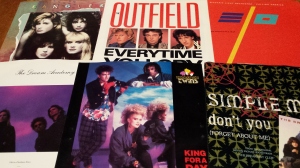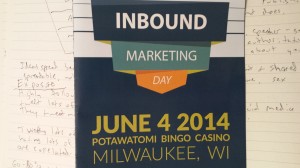 Back in the days when record albums were issued in vinyl, I used to base my decision to plop down money for the entire album on whether or not I liked the B-side of the single. My thinking was, if the B-side was good the album would be good. If the B-side was good but wasn’t on the album, the album had to be great because they had more material than they could fit on the album.
Back in the days when record albums were issued in vinyl, I used to base my decision to plop down money for the entire album on whether or not I liked the B-side of the single. My thinking was, if the B-side was good the album would be good. If the B-side was good but wasn’t on the album, the album had to be great because they had more material than they could fit on the album.
Giving More Than What’s Expected
It Pays to Be Nice
 Years ago my wife and I were flying out of O’Hare in Chicago during the Christmas holidays. We asked the gate agent at the terminal if there was a meal on the flight. He checked our tickets and said there wasn’t. We thanked him and headed to the food court to grab a couple of sandwiches.
Years ago my wife and I were flying out of O’Hare in Chicago during the Christmas holidays. We asked the gate agent at the terminal if there was a meal on the flight. He checked our tickets and said there wasn’t. We thanked him and headed to the food court to grab a couple of sandwiches.
Sales and Marketing Lessons from the Apple Guy
 One of the things I love most about fall is apple season. Apples are my favorite fruit and there’s nothing like having a crisp, fresh, delicious apple. Apple season only lasts about two months, so I appreciate it when it comes around.
One of the things I love most about fall is apple season. Apples are my favorite fruit and there’s nothing like having a crisp, fresh, delicious apple. Apple season only lasts about two months, so I appreciate it when it comes around.
3 Takeaways from Inbound Marketing Day
 Last Wednesday I attended Inbound Marketing Day at Potawatomi Bingo Casino in Milwaukee. What a great mix of local and national inbound marketing experts. I heard great presentations about content, landing page optimization, buyer personas, video strategy, and a lot more.
Last Wednesday I attended Inbound Marketing Day at Potawatomi Bingo Casino in Milwaukee. What a great mix of local and national inbound marketing experts. I heard great presentations about content, landing page optimization, buyer personas, video strategy, and a lot more.
Who Have You Helped Today?
 Learning how to give instead of trying to get, changed how I approached sales, customer service, and life.
Learning how to give instead of trying to get, changed how I approached sales, customer service, and life.
Follow Me!